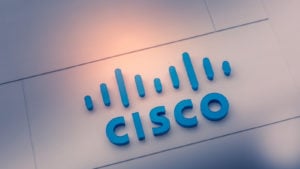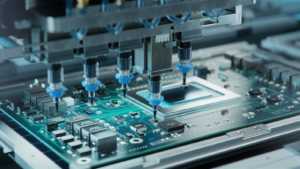No bigger than a grain of sand, smart dust is made up of tiny microelectromechanical systems (MEMS). All of which can measure and send information on their environment.
Reportedly, the dust can detect external stimuli such as light, temperature, movement, sound, and air pressure in real-time. Better, their small size and lightweight construction allow them to float like dust.
When used in agriculture, for example, smart dust can collect information on soil moisture and nutrients. It can even be used for nationwide security, detecting potential threats and alerting authorities. In addition, it may even find use in patient diagnostics to monitor a patient’s vital signs. It could even help detect cell abnormalities.
Plus, according to Allied Market Research, the smart dust market could be worth $392.5 million by 2032 from $114.6 million. If so, it could help create big opportunities for these three smart dust stocks.
International Business Machines (IBM)

One of the top smart dust stocks is International Business Machines (NYSE:IBM), which has been involved with microelectromechanical systems technology for some time.
In 2018, IBM introduced the world’s smallest computer the size of a grain of sand. But it also “has enough computer power to handle basic AI tasks and work with blockchain,” as noted by InterestingEngineering.com. IBM also said the chip has several hundred thousand transistors that allow it to monitor and even communicate the data.
However, it’s not just smart dust that has investors excited about IBM.
The company is also thriving, and the artificial intelligence story shows no signs of cooling. This is all thanks to IBM Watsonx, its AI and data platform, and IBM Granite, its family of AI models that help developers bring trusted, safe, generative AI into applications.
Cisco Systems (CSCO)

Cisco Systems (NASDAQ:CSCO), which has also invested in smart dust research, says it could “revolutionize data collection,” as noted by the Institute of Innovation and Knowledge Exchange.
According to its 2011 report – The Internet of Things: How the Next Evolution of the Internet is Changing Everything – the company notes, “Initiatives and advances, such as Cisco’s Planetary Skin, HP’s central nervous system for the earth, and smart dust, have the potential to add millions – even billions – of sensors to the Internet.”
Cisco is also trying to prove itself to be a major player in AI. Not only did it just acquire Splunk for $28 billion, but it also launched HyperShield, which uses AI to help secure data centers and applications.
Better, while investors wait for Cisco’s bets to pay off, they can collect its 3.4% dividend yield. CSCO just recently paid out a 40-cent dividend on July 24, with more to follow.
Hitachi (HTHIY)

Another one of the top smart dust stocks to watch is Hitachi (OTCMKTS:HTHIY).
In early 2007, the company introduced us to its radio frequency identification (RFID) chips that were about 0.002 inches by 0.002 inches, says NBCNews.com.
As noted at the time, “the new chip is an improvement on its predecessor from Hitachi €” the Mu-chip, which at 0.4 millimeters by 0.4 millimeters, looks about the size of the period at the end of this sentence.”
Even more fascinating, LiveScience.com says the devices could be used to identify and track people. In fact, they note, “If police agencies sprinkled these tags around, every individual could be tracked and later identified at leisure, with powerful enough tag scanners.”
On the date of publication, Ian Cooper did not have (either directly or indirectly) any positions in the securities mentioned. The opinions expressed in this article are those of the writer, subject to the InvestorPlace.com Publishing Guidelines.
On the date of publication, the responsible editor did not have (either directly or indirectly) any positions in the securities mentioned in this article.
Ian Cooper, a contributor to InvestorPlace.com, has been analyzing stocks and options for web-based advisories since 1999.
